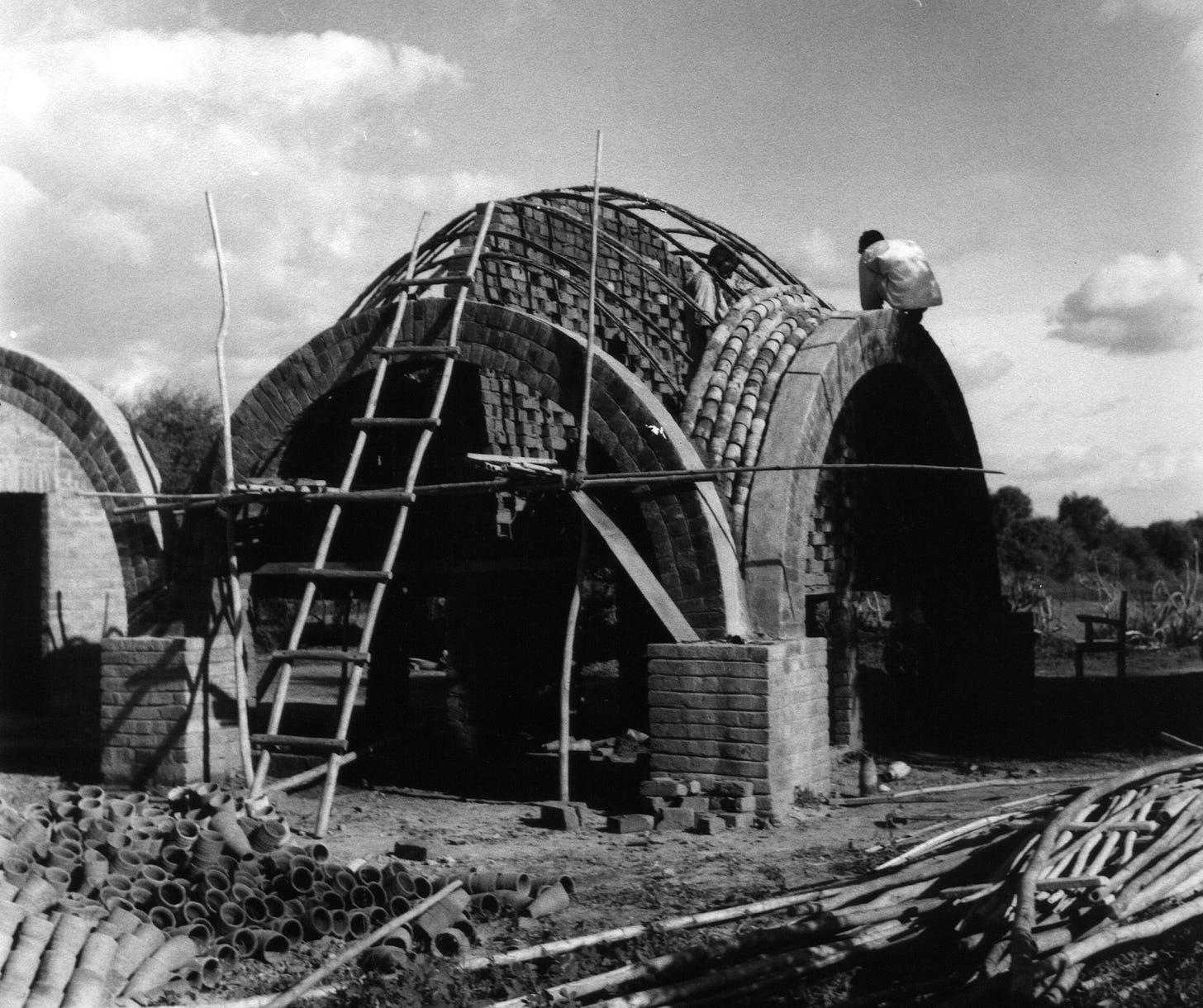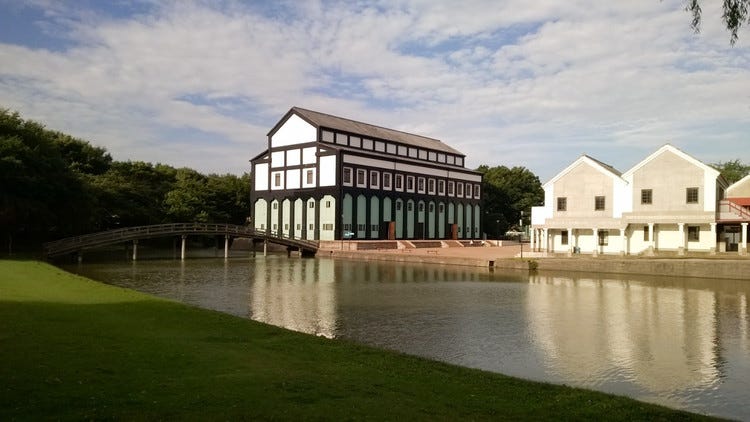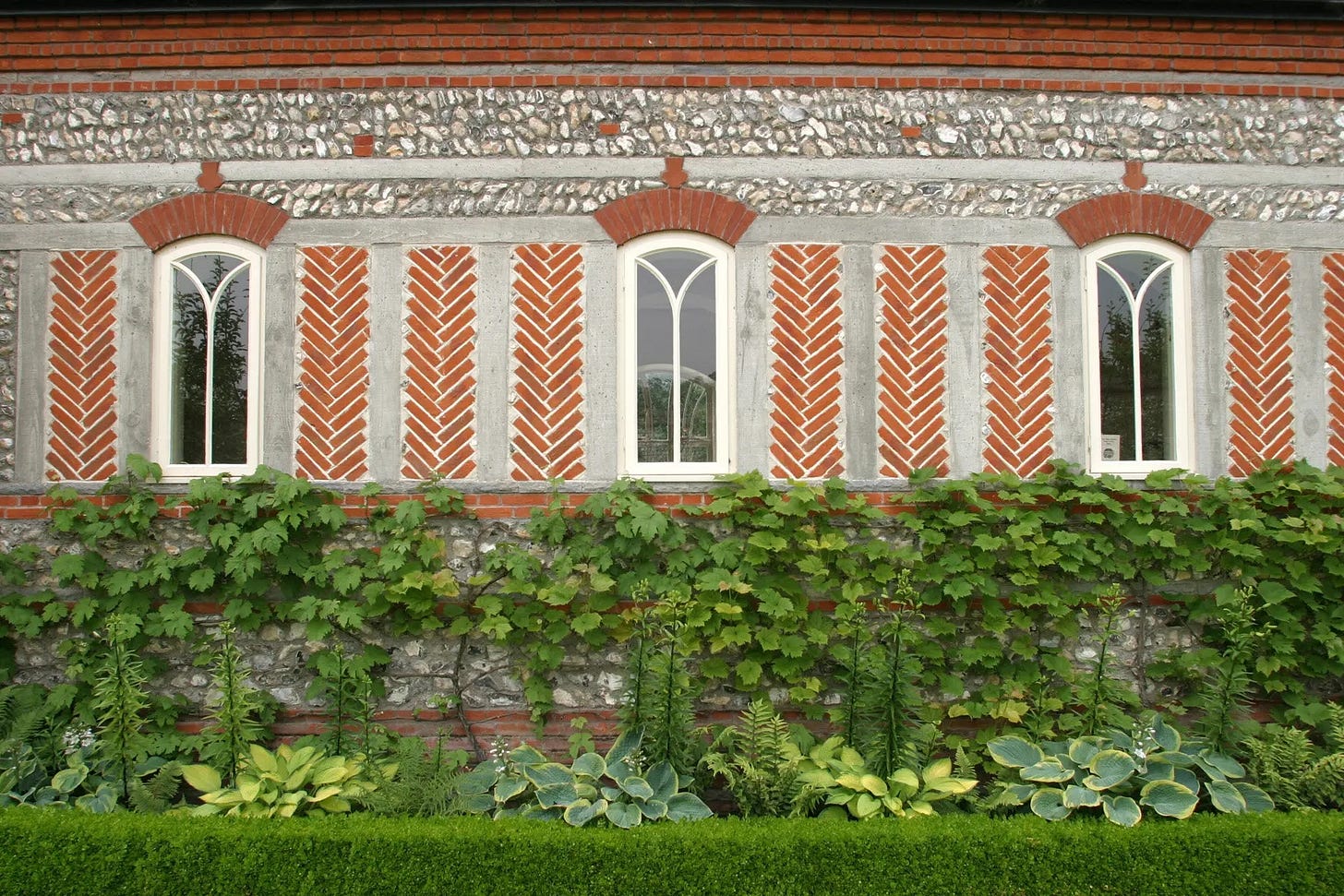In 1977, architect Christopher Alexander published A Pattern Language, a radical attempt to codify the recurring solutions that make human spaces come alive. Alexander believed that certain patterns, like the deep window sill, the sacred grove, the half-hidden garden, etc. possessed a “quality without a name” that transcended mere functionality. These patterns were emergent properties of human nature itself, timeless configurations that had been discovered and rediscovered across cultures and centuries.
Alexander argued that genuine design emerges not from the imposition of novel forms but instead from careful attention to the generative patterns that exist in the world. The designer’s role is to midwife possibilities that are latent in the situation at hand.
In a field where technological capabilities evolve not by decades but by weeks, where LLMs acquire new competencies faster than we can theorize them, we face a temptation to conflate technical possibility with wisdom. Yet Alexander teaches that what we need most is not more innovation but a return to the art of pattern recognition, a way of designing that honors the timeless patterns of how humans actually learn, with an emphasis on craft, taste, and quality.
Alexander’s key insight was that great architecture emerges not from grand theories but from careful attention to recurring problems and their elegant solutions. A successful town square, for example, isn’t successful because it follows abstract principles of urban planning, but because it embodies patterns that have been tested by centuries of human use: the right scale for gathering, the proper relationship between movement and rest, the delicate balance of openness and enclosure, etc.
The same logic applies to learning.
Effective pedagogy, across cultures and millennia, exhibits certain recognizable patterns. Socrates knew this when he structured his dialogues around carefully sequenced questions that led students to discover contradictions in their own thinking. Maria Montessori observed it when she noticed that children learn best in environments that offer structured freedom: clear boundaries within which exploration can unfold.
They represent what Alexander called “the timeless way.” Timeless, not because they never change, but rather, because they capture recurring solutions to perennial human needs.
We live in what might be called the first age of algorithmic design. It is a time when artificial intelligence systems can generate everything from architectural plans to pedagogical content, both with unprecedented speed and, perhaps surprising, sophistication. Yet this abundance of generative capability has revealed a deeper crisis. Namely, we have conflated the power to produce with the ability to craft meaningful experiences.
Alexander saw this crisis emerging in architecture decades before AI existed. He argued that modern design had become trapped in what he called “the picture-plane mentality,” which is to say, that there is a tendency to design from above, imposing abstract concepts onto living situations, rather than emerging from careful observation of what actually works. The result was buildings that looked impressive in photographs but felt dead to their inhabitants, structures that satisfied theoretical commitments while failing to nourish human life. The architectural blueprints passed the muster, so to speak, but failed to impart the way the space should feel.
The same patterns of thought threaten AI development today. We possess unprecedented capabilities to generate content, personalize experiences, and optimize outcomes. But do we understand who and what we’re designing for?
In education, systems can track every click, analyze every hesitation, and predict every difficulty. But it’s worth a moment of pause: optimization toward what end?
If we haven’t grasped the fundamental patterns of human learning, our most sophisticated algorithms may simply be automating our misunderstandings at scale.
Alexander’s understanding of design drew heavily from what he called “the wisdom of traditional cultures”: the accumulated knowledge embedded in vernacular architectures that had evolved over centuries. A traditional Japanese house, for instance, wasn’t designed by a single architect imposing a vision but grew from generations of builders responding to specific climates, materials, and ways of life. Over centuries, the design transformed through these relationships. The resulting structures possessed an organic intelligence that no individual designer could have conceived.
This perspective aligns with the ancient Greek concept of techne: the skilled practice that bridges theoretical knowledge and practical wisdom. For Aristotle, techne was about discerning the potential inherent in situations and bringing it to fruition. The potter works with the properties of clay to elicit form from it; the teacher doesn’t manufacture understanding but cultivates conditions in which it can emerge.
In the Meno, Socrates helps an untutored student discover geometric principles by asking questions that reveal knowledge already latent within him.
Alfred North Whitehead offers a bridge between the classical insights of ancient Greek pedagogy and more contemporary design challenges. Whitehead argued that genuine learning follows what he called “the rhythm of education,” which he describes as a natural progression through three distinct yet interconnected phases: romance, precision, and generalization.
The stage of romance, Whitehead insisted, must come first. This is the phase of wonder, of falling in love with ideas before understanding them fully. Romance is about encounter and inspiration, about the quality of attention that emerges when thought meets something genuinely new. Without this initial enchantment, Whitehead argued, precision becomes mere drill and generalization becomes empty abstraction.
Only after romance has awakened genuine interest can precision meaningfully enter the experience. This is the phase of systematic study, of acquiring the tools and techniques necessary to engage deeply with the subject matter. But precision without romance is sterile; it produces competence without understanding, skill without wisdom.
The final phase, generalization, involves seeing how particular insights connect to larger patterns of meaning. This isn't simply the application of learned techniques but the recognition of universal principles that transcend specific contexts. True generalization returns us to romance but at a higher level. We fall in love again, but now with deeper appreciation for the structures that make love possible.
What Alexander called “the timeless way of building” was about rediscovering the generative processes that engendered the patterns we take for granted. He argued that healthy design emerges from what he termed “the quality without a name.” What is the quality without a name? It is an ineffable aliveness that arises when human needs and environmental possibilities are brought into proper relationship.
This insight finds its most concrete pedagogical expression in the work of Maria Montessori, whose educational innovations embodied many of Alexander’s principles decades before he articulated them. Montessori’s novelty lay in observing the natural patterns of child development and designing environments that supported them. She created what she called a “prepared environment” to support and follow the interests of a student.
Take Montessori’s famous “three-period lesson,” a deceptively simple teaching structure that illustrates Whitehead’s rhythm of education in action. In the first period, the teacher simply presents the concept. “This is red,” she’d introduce, allowing the child to encounter the new idea without pressure or evaluation. This is pure romance: the wonder of recognition, the pleasure of naming, the joy of first contact with something previously unknown.
The second period involves active engagement: “Show me red,” “Touch the red,” “Put the red here.” The child moves and manipulates, practicing precision through embodied interaction. This is what Montessori called “purposeful activity,” which is not to be confused with rote memorization. It is the natural desire to master what has first enchanted us.
The third period returns to language but at a higher level: “What is this?” Now the child demonstrates not just recognition but understanding, not just precision but the ability to generalize. The lesson completes Whitehead’s cycle, moving from romance through precision to generalization, but in a way that honors the child's natural developmental patterns.
The insight shared by Alexander, Whitehead, and Montessori is that effective design, whether of buildings or pedagogy, must work with natural patterns. The designer’s role is to create the conditions in which inherent potential can unfold, according to their own organic logic.
These patterns are cross-culturally recurrent. They are responses to deep structures of human nature. The Socratic dialogue, the Montessori prepared environment, the Medieval guild system’s careful progression from novice to master, express living patterns about human development.
Alexander’s organizing insight was that design must attend to wholes rather than parts. In living architecture, he argued, every element simultaneously serves its own function and contributes to larger patterns of organization. A window isn’t just an opening in a wall but a threshold between inner and outer worlds, a frame for contemplation, a source of natural rhythm in daily life.
This principle challenges the reductive tendencies of contemporary AI design. Rather than optimizing individual components for better content generation, faster feedback loops, more precise assessment, etc. we might ask what it means to design for the whole human being. How do we create experiences that attend not just to cognitive performance but to the full spectrum of human flourishing?
Whitehead’s rhythm of education offers a helpful framework for this holistic approach. Most pedagogical systems rush immediately to precision, trying to deliver information, assess comprehension, correct errors. But Whitehead insisted that without romance, precision becomes mere mechanical drill. The child who memorizes multiplication tables without ever experiencing the wonder of mathematical patterns has learned a technique but missed the deeper education.
Personalization is about helping each student find their own way into universal patterns of understanding. It’s not necessarily about giving everyone different content. It’s about providing multiple pathways into the same essential rhythms of human development, in accordance with interest.
One way to name this: dynamic personalization.
Alexander saw this paradox clearly in architecture. The most personal, individualized buildings weren’t those that ignored traditional patterns but those that expressed them with particular intensity and clarity. A Japanese tea house feels utterly specific to its context and purpose, yet it embodies patterns of spatial organization, material use, and human interaction that transcend any single culture or historical moment.
This suggests a fundamentally different approach to think about design in the age of AI. A system designed for dynamic personalized learning would start to ask, “Where is this student in the natural rhythm of learning, and how can we support their movement to the next phase?”
But here we encounter the deepest challenge for design in the AI era: Can AI systems, no matter how sophisticated, ever embody the patterns of living pedagogy that Alexander, Whitehead, and Montessori discovered?
Each of these thinkers insisted that education involves something alive: the dynamic interplay between thinking and world that generates authentic relationships with understanding and creativity.
Alexander’s patterns were attempts to capture organic aliveness. Whitehead’s rhythms were descriptions of how thinking naturally moves when it encounters genuine novelty. Montessori’s prepared environments were carefully designed conditions for what she called "the spiritual embryo" to unfold according to its own inner logic.
If design is about recognizing and nurturing the potential inherent in situations, then perhaps the most sophisticated AI systems will always be sophisticated tools and not true designers.
The question isn’t whether AI can replace human teachers, a question often leveled; but rather, whether it can help us recognize and cultivate the patterns that make human learning most effective.
A pedagogical system designed according to the latent principles of Alexander might serve what he called a “pattern language”: a vocabulary that helps us recognize and articulate the structures that support learning.
Imagine a world in which an experience could recognize when a student is in the stage of romance with a subject through attention to the quality of their engagement, the nature of their questions, the patterns of their exploration. Such a system wouldn’t rush to deliver information. It would offer nourishment, to use an idea from Montessori, opportunities for deeper encounter, richer exploration, more profound wonder.
When precision becomes appropriate, the system might offer what Whitehead called “the grammar of the subject,” identifying the structures that make mastery possible. And when the student is ready for generalization, it might help them see how their particular insights connect to the larger patterns of human knowledge and experience.
The danger, as all three thinkers clearly articulated, is that we might mistake the map for the territory. Invariably, we might become so fascinated by our ability to codify and optimize patterns that we forget their ultimate purpose. The patterns exist not for their own sake but to serve life, to create conditions in which human potential can unfold in ways that surprise and delight even the pattern-makers themselves.
What happens when we take seriously the possibility that the most important aspects of design might be precisely those that resist optimization? When we recognize that the “quality without a name” that Alexander sought, the organic rhythm that Whitehead described, and the spiritual nature of learning that Montessori observed might be not problems to be solved but mysteries to be honored?
The more sophisticated our tools become, the more we need the wisdom of Alexander, Whitehead, and Montessori to guide us toward futures worthy of our deepest aspirations. These pioneers teach us that the goal of design is to create the conditions in which the eternally new can emerge, again and again, in each student, anew.












Thank you 🙏